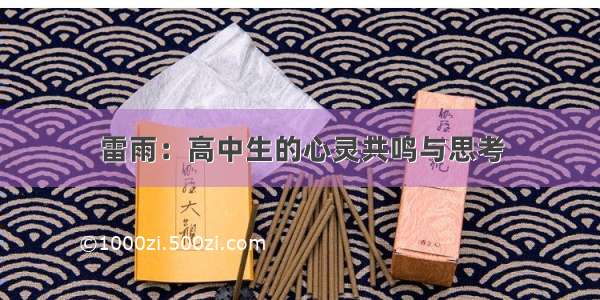
如今走在大街上,放眼望去,赤橙黄绿青蓝紫,满目皆是染发者。当人们在享受多彩绚烂生活的同时,殊不知染发剂改造的除了头发,还有健康。根据现有的流行病学证据、动物研究、机制研究以及其他相关数据,世界卫生组织下属国际癌症研究机构已将理发美发等
职业接触的染发剂
归类为可能致癌物(2A类),
个人日常生活接触的染发剂
尚未分类(3类)。现代染发剂包括
氧化(永久)染料
、直接(半永久或临时)染料、天然染料。
永久染发剂
是最受关注和使用最广泛的类型,在美国和欧洲大约占80%的市场份额,在亚洲甚至更高。
9月2日,国际四大医学期刊之一、英国医学会《英国医学杂志》正刊发表
美国哈佛大学医学院、布莱根医院和波士顿妇女医院、达纳法伯癌症研究院、哈佛大学陈曾熙公共卫生学院、印第安纳大学、奥地利维也纳医科大学
的
护士健康研究
报告,调查了个人日常生活接触永久染发剂对各种癌症发病风险和死亡风险的影响。
该大样本前瞻队列长期随访研究从
1976年
开始从美国各地入组年龄30~55岁健康无癌且报告了个人使用永久染发剂情况的女性护士
11万7200例
,并随访了长达
36年
,对使用永久染发剂与否、持续时间、频次、用量(根据持续时间和频次计算的累积剂量)、首次使用年龄、首次使用以来的时间进行分析。主要结局指标为个人使用永久染发剂对全部癌症和特定癌症发病风险以及癌症相关死亡风险的影响。利用多因素比例风险回归模型,对
年龄、随访周期、种族、天生头发颜色、平均体重指数、18岁时体重指数、吸烟情况、酒精摄入量、童年日晒反应、晒伤起泡次数、手臂痣数、全年紫外线接触量、绝经与否、绝经后激素使用情况、口服避孕药与否、青少年期体型、初次月经年龄、生育史、首次生育年龄、哺乳史、一级亲属乳腺癌史、良性乳腺病史、乳腺钼靶检查史、体育运动量、结直肠癌家族史、糖尿病史、结肠镜或乙状结肠镜筛查史、阿司匹林用药史、非阿司匹林非甾体抗炎用药史、复合维生素用药史、卡路里摄入量、红肉或加工肉类摄入量、膳食纤维和叶酸摄入量、钙和维生素D摄入量、液体总摄入量、高血压史、高血胆固醇史
等其他影响因素进行校正后,计算风险比及其95%置信区间。
从上述样本量、随访时间、事先考虑到的各种影响因素数量及其细致程度可见,这显然是史诗级研究。而且,该研究对象全部选择女性护士,也确保了数据的可靠性和稳定性。
结果,永久染发剂的使用者与未使用者相比:
实体恶性肿瘤发病风险相似(20805例,不包括非黑素瘤皮肤癌;风险比:0.98,95%置信区间:0.96~1.01)
血液恶性肿瘤发病风险相似(1807例;风险比:1.00,95%置信区间:0.91~1.10)
皮肤基底细胞癌发病风险高5%
(22560例;风险比:1.05,95%置信区间:1.02~1.08)
其他恶性肿瘤发病风险相似(皮肤鳞状细胞癌、膀胱癌、黑素瘤、雌激素受体阳性乳腺癌、孕激素受体阳性乳腺癌、激素受体阳性乳腺癌、脑肿瘤、结肠直肠癌、肾癌、肺癌、血液恶性肿瘤大多数主要子类和组织学亚型)
全部癌症相关死亡风险相似(4860例;风险比:0.96,95%置信区间:0.91~1.02)
对于
天生头发颜色较深
的女性,永久染发剂的使用者与未使用者相比:
卵巢癌发病风险高21%
(449例;风险比:1.21,95%置信区间:1.00~1.47)
霍奇金淋巴瘤发病风险高289%
(24例;风险比:3.89,95%置信区间:1.61~9.40)
对于
天生头发颜色较浅
的女性,永久染发剂的使用者与未使用者相比:
皮肤基底细胞癌发病风险高6%
(11334例;风险比:1.06,95%置信区间:1.02~1.11)
染发次数每增加50次,永久染发剂的使用者与未使用者相比:
雌激素受体阴性乳腺癌发病风险高2%
(1521例;风险比:1.02,95%置信区间:1.00~1.03)
孕激素受体阴性乳腺癌发病风险高1%
(2379例;风险比:1.01,95%置信区间:1.00~1.02)
激素受体阴性乳腺癌发病风险高2%
(1287例;风险比:1.02,95%置信区间:1.01~1.03)
弥漫性大B细胞淋巴瘤发病风险高2%
(190例;风险比:1.02,95%置信区间:1.00~1.05)
因此,该研究结果表明,个人使用永久染发剂与大多数癌症发病风险和癌症相关死亡风险之间未见显着相关性。不过,
皮肤基底细胞癌、乳腺癌(雌激素受体阴性、孕激素受体阴性、激素受体阴性)、卵巢癌、淋巴瘤
发病风险增加,并且根据天生头发颜色进行分层分析结果不同,故有必要开展进一步研究。
相关链接
染发剂、柔顺直发剂与乳腺癌风险
染发剂或柔顺剂与乳腺癌发生风险
日用化学品与女性乳腺癌发生风险
塑化剂长期接触与乳腺癌发生风险
BMJ. Sep 2;370:m2942.
Personal use of permanent hair dyes and cancer risk and mortality in US women: prospective cohort study.
Yin Zhang, Brenda M Birmann, Jiali Han, Edward L Giovannucci, Frank E Speizer, Meir J Stampfer, Bernard A Rosner, Eva S Schernhammer.
Brigham and Women"s Hospital and Harvard Medical School, Boston, MA, USA; Dana-Farber Cancer Institute and Harvard Medical School, Boston, MA, USA; Harvard T H Chan School of Public Health, Boston, MA, USA; Indiana University, Indianapolis, IN, USA; Medical University of Vienna, Vienna, Austria.
OBJECTIVE
: To evaluate the associations between personal use of permanent hair dyes and cancer risk and mortality.
DESIGN
: Prospective cohort study.
SETTING AND PARTICIPANTS
: 117200 women enrolled in the Nurses" Health Study, an ongoing prospective cohort study of female nurses in the United States. The women were free of cancer at baseline, reported information on personal use of permanent hair dyes, and were followed for 36 years.
EXPOSURE
: Status, duration, frequency, and integral use (cumulative dose calculated from duration and frequency) of permanent hair dyes. Age at first use and time since first use of permanent hair dyes.
MAIN OUTCOME MEASURES
: Associations of personal use of permanent hair dyes with risk of overall cancer and specific cancers, and cancer related death. Age and multivariable adjusted hazard ratios and 95% confidence intervals were estimated by using Cox proportional hazard models.
RESULTS
: Ever users of permanent hair dyes had no significant increases in risk of solid cancers (n=20805, excluding non-melanoma skin cancers; hazard ratio 0.98, 95% confidence interval 0.96 to 1.01) or hematopoietic cancers overall (n=1807; 1.00, 0.91 to 1.10) compared with non-users. Additionally, ever users did not have an increased risk of most specific cancers (cutaneous squamous cell carcinoma, bladder cancer, melanoma, estrogen receptor positive breast cancer, progesterone receptor positive breast cancer, hormone receptor positive breast cancer, brain cancer, colorectal cancer, kidney cancer, lung cancer, and most of the major subclasses and histological subtypes of hematopoietic cancer) or cancer related death (n=4860; 0.96, 0.91 to 1.02). Basal cell carcinoma risk was slightly increased for ever users (n=22560; 1.05, 1.02 to 1.08). Cumulative dose was positively associated with risk of estrogen receptor negative breast cancer, progesterone receptor negative breast cancer, hormone receptor negative breast cancer, and ovarian cancer. An increased risk of Hodgkin lymphoma was observed only for women with naturally dark hair (based on 70 women, 24 with dark hair), and a higher risk of basal cell carcinoma was observed for women with naturally light hair.
CONCLUSION
: No positive association was found between personal use of permanent hair dye and risk of most cancers and cancer related mortality. The increased risk of basal cell carcinoma, breast cancer (estrogen receptor negative, progesterone receptor negative, hormone receptor negative) and ovarian cancer, and the mixed findings in analyses stratified by natural hair color warrant further investigation.
DOI
: 10.1136/bmj.m2942
















